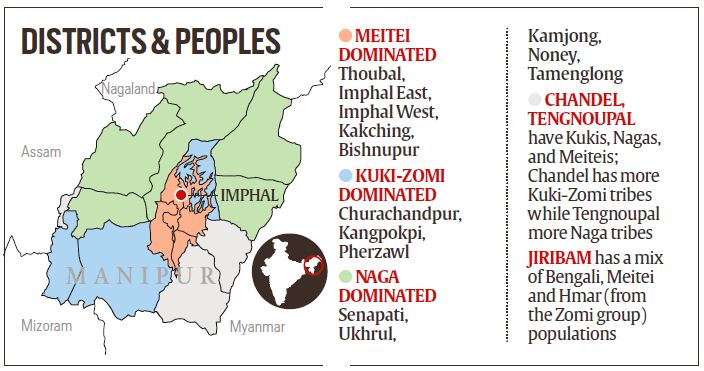7667766266
enquiry@shankarias.in
A battle is raged between Manipuri commandos and Kuki-Zomi insurgent groups killing many insurgents amidst rising protests and spurts of violence in Manipur.

Kukiland – an imagined country spreading across the Kuki-Zomi inhabited areas of India, Myanmar and Bangladesh.